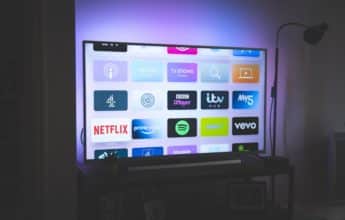With the introduction of tvOS and App Store on Apple TV, building apps for the platform has become less complex. Developers will find tvOS familiar, as it uses many of the same frameworks and APIs as iOS. And with the App Store, the submission process has become a lot simpler.
That said, there are some key differences, and jumping into tvOS development requires a game plan. Below is a breakdown of things that need to be considered when building tvOS apps for Apple TV.
Extensions of Current Apps
Due to the similarities between iOS and tvOS, developing for Apple TV doesn’t necessarily require creating completely from scratch (unless of course you are building a new, native application). Companies have the ability to gain quick wins by getting on the platform early with extensions of current apps. We predict that the majority of early tvOS apps are going to be of this nature. Building an extension of your iOS app to work on the Apple TV will help leverage your existing user base and ease the transition to the platform.
Perhaps the biggest opportunity this early in the game is for media companies and content providers, who can rework their current apps and optimize the experience for Apple TV. Given that the App Store has opened the floodgates for more content, it will be simpler to get your content submitted, approved, and released.
User Expectations
We’re no longer dealing exclusively with smartphones and tablets; tack on big screen TVs to the list. Apps will display on very large screens, and users will expect more as the platform matures. The experience will need to go well beyond what users can currently accomplish on their mobile devices, as the big screen eliminates many of the inherent limitations of other devices.
User Experience
The size and nature of the TV affect not only user expectations, but also the way they interact with the apps. With phones and tablets, users see and touch on the same device. With the Apple TV, they will be using phones, tablets, or the Siri-enabled remote to interact with the larger screen. Thus, interactions will be inherently different, and developers need to account for this.
To help make the experience more intuitive, Apple TV uses a focus navigation, which helps clearly indicate to users where they are within the app. There are opportunities to implement custom UI components, and these require custom focus behaviour. If the UI is not set up thoughtfully to account for the focus model, navigation of the app can be confusing, which means a poor experience that is frustrating to users.
Therefore, it’s crucial that your tvOS app correctly employs focus so that users can easily navigate (keep in mind that users will need to be able to discern the focus from however far away they’re sitting from the TV, and movements will be subject to the inherent limitations of the remote).
Individual vs. Shared Experiences
One of the major differences with tvOS apps is that they invite shared experiences. Unlike apps on smartphones and tablets – which apart from social sharing functions are individual experiences – Apple TV allows for more viewers/users and the ability to connect multiple remotes and devices simultaneously. Introducing the multi-user component to your tvOS app will be key to success on the platform, and developers will need to think of creative ways that they can leverage this capability to create intuitive and exciting shared experiences.
Storage
Developers are going to have to account for the fact that there is no persistent local storage on Apple TV. According to the App Programming Guide for tvOS, “every app developed for the new Apple TV must be able to store data in iCloud and retrieve it in a way that provides a great customer experience.” The maximum size an app can be is 200MB; any larger and it needs to be packaged and loaded using On-Demand Resources.
The Long-Term Strategy
While in the initial stages we will see many app extensions, as tvOS matures we are likely to see more native and increasingly complex solutions brought to the Apple TV platform. We predict that the ultimate goal for the Apple TV will be offering more utility in other areas that Apple is interested in (for example, adding HomeKit to further progression into the connected home market).
As tvOS and the Apple TV become more popular, companies are going to want to start thinking about the possibilities for creating new experiences that better take advantage of what the medium has to offer. And it will present challenges. Aspects like monetization models, app discovery, and customizations will be things that brands should consider in their long term strategy should they choose to enter into the platform. As the Apple TV matures and adds more features and functionality, we’re bound to see new use cases and experiences emerge, driven by the early adopters who are quick to capitalize on the new opportunities the platform opens up.






